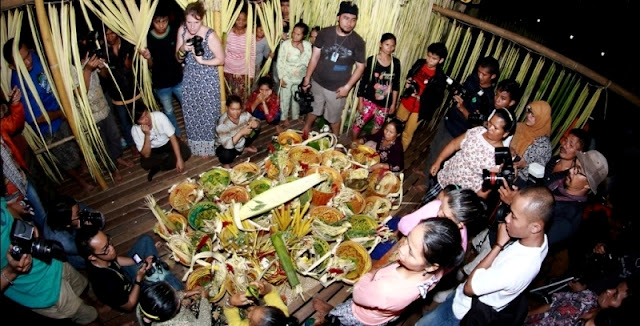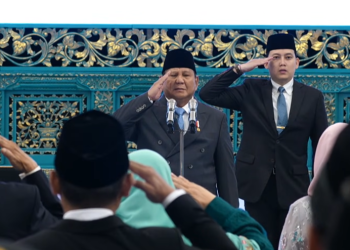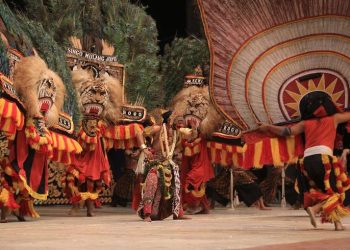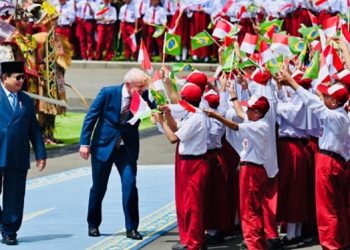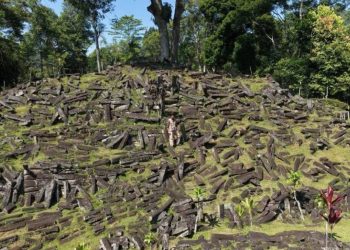Jakarta, Indonesia Sentinel — The ancestral traditions of the Dayak community remain deeply embedded in daily life in Piani District, Tapin Regency, South Kalimantan. Among these traditions is Aruh, a ritual celebrated by Dayak people to express gratitude for a bountiful rice harvest.
Across South Kalimantan, Dayak communities, particularly those living along the Meratus mountain range, observe similar thanksgiving rituals, each with unique local variations. In Piani District, home to around 5,965 residents, four villages—Pipitak Jaya, Harakit, Batung, and Balawaian—are primarily inhabited by Dayak indigenous communities.
Each of these villages has its own traditional hall (balai adat) where the Aruh ritual takes place. According to Antara, this communal celebration typically lasts between seven and twelve days and serves multiple purposes: giving thanks for the harvest, seeking protection from misfortune, performing traditional healing practices, and offering prayers and hopes for the future.
A Year-Long Preparation
Preparation for Aruh begins long before the harvest. At the start of the planting season, the community designates a communal rice field known as pataungan, specifically reserved for the ritual. Managed collectively, the field is planted and harvested using traditional methods, including ceremonies accompanied by the sound of the kangkurung musical instrument.
Following the harvest, villagers gather to decide on the scale of the upcoming Aruh: Aruh Ganal (a grand celebration), Aruh Halus (a modest ceremony), or no celebration at all. However, villagers note that skipping the ritual is exceedingly rare.
While rice remains the staple crop, the community also cultivates bananas, peanuts, chili, candlenuts, and sweet potatoes to sustain themselves until the next harvest season.
Rituals and Inclusivity
The Aruh ritual transcends religious boundaries. While it is rooted in ancestral beliefs, it also welcomes Dayak individuals who have converted to Islam, Christianity, or Hinduism. This inclusivity reflects the region’s deeply ingrained pluralism.
The ceremonies are led by Balian (male spiritual leaders) and assisted by Panjulang (female spiritual guides), both of whom play essential roles in the ritual and community life.
The ritual begins with Kalangkang Mantit and includes a series of ceremonies such as Bapincuk, Mambuka Lawang, Babalian Batahur Danda, and Babalian Bapanikan. Each ritual carries profound spiritual and philosophical meanings tied to Dayak history, community values, and their relationship with the divine.
Celebration Through Dance and Music
Entertainment is a key part of Aruh, but it is conducted without alcohol. Instead, traditional dances such as Batandik and Babansai are performed, accompanied by the rhythms of sarunai (a traditional wind instrument) and drums.
In Batandik, men dance energetically in a circle, stomping their feet on the ulin wood floor to create rhythmic sounds. Meanwhile, Babansai features women dancing gracefully in slow circles, wearing traditional sarongs.
911 Number Meaning: How One Number Transcends Its Emergency Roots
These dances serve as both entertainment and a means of fostering social bonds between villagers and guests. People of all ages, from children to elders, are encouraged to participate, creating a lively and inclusive atmosphere.
The Aruh tradition by Dayak people not only celebrates the harvest but also reinforces social cohesion, preserves cultural heritage, and reflects the Dayak community’s deep connection to their ancestral roots and the natural world.
(Raidi/Agung)


